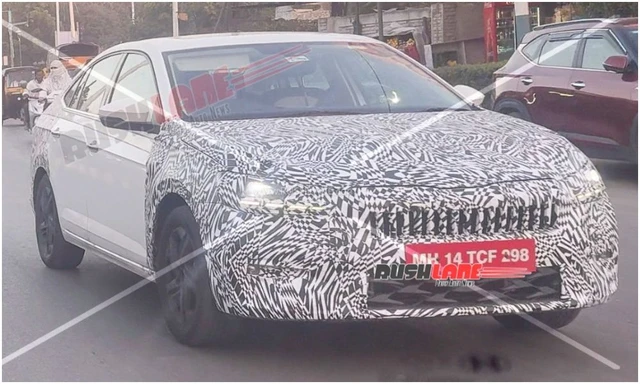Hyundai Motor Group Showcases Third-Gen Fuel Cell System

Hydrogen fuel-cell cars are supposed to be the future and the Hyundai Motor Group is working on improving these by making great leaps in R&D and is presenting the results for the world to see. The Group presented a series of new fuel cell systems including a new prototype of its third-generation fuel cell stack - a higher-powered, efficiently packaged successor to the NEXO system - that is planned for market introduction in 2023.
Currently in development, the third-generation fuel cell stack will succeed NEXO's current stack. The Group showcased two power versions of the third-generation fuel cell stack: 100kW and 200kW. The 100kW stack has reduced in size by 30 per cent, making it 70 per cent in size from the current generation stack to make it easier to apply to different vehicle types and applications. The 200kW version has been designed for commercial vehicle applications and is similar in size to the current NEXO system, but the power output has doubled.

The 200kW version has been designed for commercial vehicle applications and is similar in size to the current NEXO system, but the power output has doubled.
For the second-generation fuel cell stack launched in 2018, the company achieved 5,000 hours and 160,000 kilometres of usage, which is similar to the warranty of an ICE vehicle. For the third-generation fuel cell development, the goal is to improve durability by 50-100 per cent. High durability stacks for commercial vehicles will achieve 500,000 kilometres of drive range. Furthermore, the price of the third-generation fuel cell stack will be dramatically reduced - with projections being upwards of more than 50 percent - which will be the key factor to achieving cost parity of FCEVs with BEVs by 2030.
With flexibility and modularity at its core, the third-generation system can also be applied in various application forms. A new 'Power Unit Module' can offer a range of outputs from 500kW to 1MW by stacking 100kW modular units, ideal for use as an emergency power system for large ships or IT companies.
The Group also revealed an innovative fuel cell 'Full-Flat System' that lowers stack height to 25cm, allowing it to be used for various applications such as PBVs, MPVs, buses and trams by mounting the system to either the upper or lower body of the vehicle.
Trending News
Latest News
 Jaiveer Mehra | Dec 15, 2025Mahindra XUV 7XO Interior Previewed Ahead Of Debut; Triple Screen Layout ConfirmedNew teaser video provides a glimpse at the facelift XUV 700’s cabin and confirms some of the features.1 min read
Jaiveer Mehra | Dec 15, 2025Mahindra XUV 7XO Interior Previewed Ahead Of Debut; Triple Screen Layout ConfirmedNew teaser video provides a glimpse at the facelift XUV 700’s cabin and confirms some of the features.1 min read Jaiveer Mehra | Dec 15, 20252026 MG Hector Facelift Launched At Rs 11.99 LakhThe latest facelift of MG’s SUV brings tweaks to the styling and cabin, along with a few new features.3 mins read
Jaiveer Mehra | Dec 15, 20252026 MG Hector Facelift Launched At Rs 11.99 LakhThe latest facelift of MG’s SUV brings tweaks to the styling and cabin, along with a few new features.3 mins read car&bike Team | Dec 14, 2025Top-Spec Tata Sierra Accomplished, Accomplished+ Prices RevealedRegardless of the powertrain combination chosen, all Tata Sierra Accomplished+ trims cost upwards of Rs 20 lakh (ex-showroom).2 mins read
car&bike Team | Dec 14, 2025Top-Spec Tata Sierra Accomplished, Accomplished+ Prices RevealedRegardless of the powertrain combination chosen, all Tata Sierra Accomplished+ trims cost upwards of Rs 20 lakh (ex-showroom).2 mins read car&bike Team | Dec 13, 2025Skoda Slavia Facelift Spied Testing Again Ahead Of DebutThe facelifted Slavia is expected to debut in 2026 as Skoda-VW India looks to refresh its India 2.0 range.1 min read
car&bike Team | Dec 13, 2025Skoda Slavia Facelift Spied Testing Again Ahead Of DebutThe facelifted Slavia is expected to debut in 2026 as Skoda-VW India looks to refresh its India 2.0 range.1 min read car&bike Team | Dec 13, 20252026 MG Hector Facelift Interior Previewed Ahead Of DebutLatest teaser video of the upcoming Hector facelift suggests minimal cosmetic changes to the interior as well as reveals a new alloy-wheel design.1 min read
car&bike Team | Dec 13, 20252026 MG Hector Facelift Interior Previewed Ahead Of DebutLatest teaser video of the upcoming Hector facelift suggests minimal cosmetic changes to the interior as well as reveals a new alloy-wheel design.1 min read Jaiveer Mehra | Dec 13, 2025Passenger Vehicle, Two-Wheeler Sales Surge In November 2025: SIAMBoth segments reported a growth in the region of 20 per cent, though year-to-date sales growth in FY2026 was notably flatter at around 3 per cent.1 min read
Jaiveer Mehra | Dec 13, 2025Passenger Vehicle, Two-Wheeler Sales Surge In November 2025: SIAMBoth segments reported a growth in the region of 20 per cent, though year-to-date sales growth in FY2026 was notably flatter at around 3 per cent.1 min read
 Janak Sorap | Dec 11, 2025Harley-Davidson X440 T First Ride Review: Smarter and SharperHarley-Davidson has taken the X440 and given it a more focused and engaging twist. The result is the X440 T—essentially the same platform but updated in areas that give the motorcycle more appeal and riders more thrill.5 mins read
Janak Sorap | Dec 11, 2025Harley-Davidson X440 T First Ride Review: Smarter and SharperHarley-Davidson has taken the X440 and given it a more focused and engaging twist. The result is the X440 T—essentially the same platform but updated in areas that give the motorcycle more appeal and riders more thrill.5 mins read Shams Raza Naqvi | Dec 10, 20252025 Mini Cooper Convertible Review: More Colour On Indian RoadsThe updated Mini Cooper Convertible is set to be launched in the Indian market in the next few days. We drive it around Jaisalmer for a quick review.1 min read
Shams Raza Naqvi | Dec 10, 20252025 Mini Cooper Convertible Review: More Colour On Indian RoadsThe updated Mini Cooper Convertible is set to be launched in the Indian market in the next few days. We drive it around Jaisalmer for a quick review.1 min read Bilal Firfiray | Dec 8, 2025Tata Sierra Review: India’s New Favourite?Marking its return after a few decades, the reborn Sierra has made everyone sit up and take notice. But is it worth the hype?10 mins read
Bilal Firfiray | Dec 8, 2025Tata Sierra Review: India’s New Favourite?Marking its return after a few decades, the reborn Sierra has made everyone sit up and take notice. But is it worth the hype?10 mins read Girish Karkera | Dec 4, 20252026 Honda Prelude First Drive: Domesticated Civic Type RA sporty-looking coupe built to give customers a taste of performance but not at the expense of everyday practicality.5 mins read
Girish Karkera | Dec 4, 20252026 Honda Prelude First Drive: Domesticated Civic Type RA sporty-looking coupe built to give customers a taste of performance but not at the expense of everyday practicality.5 mins read Seshan Vijayraghvan | Nov 29, 2025Mahindra XEV 9S First Drive Review: Big Electric SUV, Bigger ExpectationsThe XEV 9S lands at a time when the EV crowd is growing fast. It’s a big, born-electric, three-row SUV that starts under 20 lakh. It sits close to the XUV700 in size, but the brief is very different. Here’s what it’s like on the road.11 mins read
Seshan Vijayraghvan | Nov 29, 2025Mahindra XEV 9S First Drive Review: Big Electric SUV, Bigger ExpectationsThe XEV 9S lands at a time when the EV crowd is growing fast. It’s a big, born-electric, three-row SUV that starts under 20 lakh. It sits close to the XUV700 in size, but the brief is very different. Here’s what it’s like on the road.11 mins read














































































































































